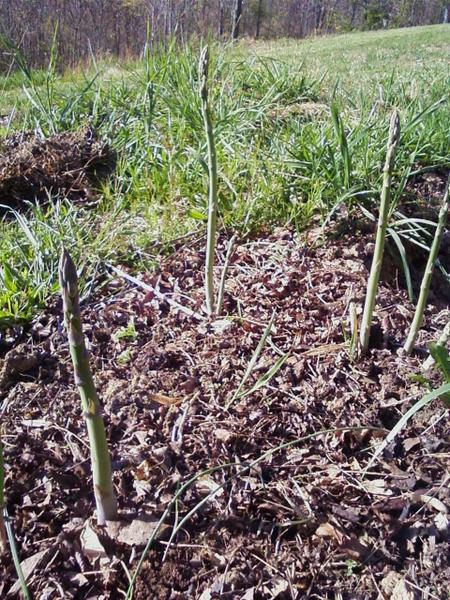
Climate Change Solutions for NC Gardeners
State Climate Office of North Carolina This three-part series of lessons covers climate change from the global perspective to what …



El inglés es el idioma de control de esta página. En la medida en que haya algún conflicto entre la traducción al inglés y la traducción, el inglés prevalece.
Al hacer clic en el enlace de traducción se activa un servicio de traducción gratuito para convertir la página al español. Al igual que con cualquier traducción por Internet, la conversión no es sensible al contexto y puede que no traduzca el texto en su significado original. NC State Extension no garantiza la exactitud del texto traducido. Por favor, tenga en cuenta que algunas aplicaciones y/o servicios pueden no funcionar como se espera cuando se traducen.
Inglês é o idioma de controle desta página. Na medida que haja algum conflito entre o texto original em Inglês e a tradução, o Inglês prevalece.
Ao clicar no link de tradução, um serviço gratuito de tradução será ativado para converter a página para o Português. Como em qualquer tradução pela internet, a conversão não é sensivel ao contexto e pode não ocorrer a tradução para o significado orginal. O serviço de Extensão da Carolina do Norte (NC State Extension) não garante a exatidão do texto traduzido. Por favor, observe que algumas funções ou serviços podem não funcionar como esperado após a tradução.
English is the controlling language of this page. To the extent there is any conflict between the English text and the translation, English controls.
Clicking on the translation link activates a free translation service to convert the page to Spanish. As with any Internet translation, the conversion is not context-sensitive and may not translate the text to its original meaning. NC State Extension does not guarantee the accuracy of the translated text. Please note that some applications and/or services may not function as expected when translated.
Collapse ▲
State Climate Office of North Carolina This three-part series of lessons covers climate change from the global perspective to what …

Thanks to contributions from many Master Gardener℠ volunteers, two great resources are now available to gardeners and horticultural educators: …
Charlotte Glen, Horticulture Agent Our mild winter has rapidly turned into an early spring, leading many gardeners to wonder if …

As you get ready to plant this spring, don’t forget to add organic matter to the soil. Organic matter, …

Soil temperatures have warmed to above 60 degrees in our region and a late frost is highly unlikely, which …

There have been numerous reports this week of leaf tip burn on tall fescue. Some have also experienced “yellow …

New for 2022! We are now offering CONDENSED, COMPLETELY ASYNCHRONOUS self-study versions of our popular online Plant ID classes, offered …
Written by: Charlotte Glen, Horticulture Agent Interest in organic gardening is higher than ever but so is confusion over exactly …

Liriope, often called Lilyturf, is a broadleaf evergreen, clump-forming, perennial. It resembles ornamental grass but it is not a true …
Food Production Honey bees and other pollinators are essential for the production of many of the foods we grow and …

“Plant These Instead” highlights alternatives to invasive or problem-prone species commonly planted in southern landscapes. This feature of the Plants, …

Similar to murder hornets in 2020, the Joro spider is having its five minutes of fame! Recent headlines across …
Written by: Charlotte Glen, Horticulture Agent There is a completely natural and readily available substance that is guaranteed to help …

Early March is the time to apply pre-emergent herbicides to lawns in southeastern North Carolina. These products are usually …

Written by: Aimee Jarrels, Extension Master Gardener Volunteer of Pender County Who doesn’t want thick, lush, and green grass decorating …

Written by: Aimee Jarrels, Extension Master Gardener Volunteer of Pender County Tips For Spring Lawn Care Spring arrives with the first …

Written by: Aimee Jarrels, Extension Master Gardener Volunteer of Pender County When it comes to bugs, the Spotted Lanternfly is …

Written by: Aimee Jarrels, Extension Master Gardener℠ Volunteer of Pender County Soil Samples And Soil Testing For Gardens Soil testing may …

Written by: Aimee Jarrels, Extension Master Gardener℠ Volunteer of Pender County The Basics Of Garden Plant Propagation Plants are truly unique …

Written by: Aimee Jarrels, Extension Master Gardener Volunteer of Pender County Caring for houseplants is a trend most people can …

This factsheet describes Orangestriped oakworms, which are often noticed crawling about in August and September

This field guide and linked resources provide information on basic insect identification, sampling methods, monitoring, …

This factsheet describes the biology of the cane lace bug or bamboo lace bug, Leptodictya …

This factsheet describes the biology of the banded sphinx moth or lesser vine sphinx, Eumorpha …

This factsheet describes the biology of the elm-grass root aphid, Tetraneura ulmi, and provides residential …

This review presents the key steps involved in pruning a mature Carlos vine for maximum …

Asparagus has been considered a garden delicacy since Roman times. Any home gardener can grow …
Lack of yard space is no excuse for not growing a vegetable garden. Regardless of …